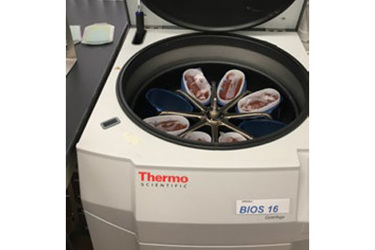Effective Applicability Of The CentriPAK BioProcess Container In Mammalian CHO-S Cell Culture Separation
By Benoit Limon, Bioprocess Applications Specialist; Jason Brown, Engineer, Design, Single Use Technologies; Yuliya Mikhed, PhD, Centrifugation Applications Specialist

The following was undertaken to analyze cell viability post centrifugation in the cases where a customer would want viable cells for development of therapeutics, creating freezer stock seed or other purposes.
Batch centrifugation, causing no damage to fragile cells, is known as the preferred method for harvesting and concentrating cell due to low shear.
In the cell culture workflow for manufacturing biological products such as monoclonal antibodies, development of therapeutics, proteins or vaccines, among others, the purity of the supernatant harvested after the up-stream step is critical to process down-stream smoothly with minimum numbers of purification steps and maximizing efficiency and lifetime of columns and filters.
This application note describes the use of batch large-capacity centrifuge Thermo ScientificTM SorvallTM BIOS 16 with 8 x 2000 mL rotor, and CentriPAK™ BPC Adapter, CentriPAK BPC, CentriPAK™ Labtainer™ BPC to study the viability of the cells and the purity of the supernatant harvested after mammalian CHO-S cell culture, comparing cell viability as well as cell concentration after the harvest and after the separation.
Get unlimited access to:
Enter your credentials below to log in. Not yet a member of Pharmaceutical Online? Subscribe today.
